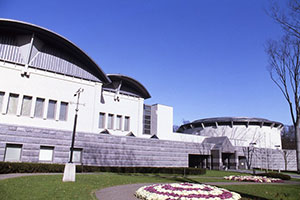
JRA Racing Museum was established on the purpose to secure a place for deepening a correct knowledge and understanding with the presentation of horse racing from the cultural aspects, in order to be useful to build the basis for healthy development of horse racing. The Museum was opened to the public on Saturday, October 26, 1991 by Equine Cultural Affairs Foundation of Japan.
The Museum are made up with the Memorial Hall of Fame which exhibits award famous horses and horsemen, the Gallery and the Special Exhibition Room for various exhibitions, three permanent exhibition rooms, the Museum Hall for multipurpose like exhibitions and events, 4-D screen with 5.1ch surround sound theater “Thoroughbred”, virtual racing simulator “Narikiri Jockey (you might be a Jockey)” and the Entrance Hall, etc. There is a walkthrough promenade in the shape of the Epsom Racecourse at the garden of the Museum.
There are burns for JRA riding & attraction horses within 5 minute walk from here and every weekend you can enjoy horseback riding and carriage riding. If you look up at the “Hiyoshi-ga-oka hill park”, you will see so many families playing with their kids, and we make up “the Horse Park” at the east side of the Tokyo Race Course. We hope you will have best time with your family or friends at the JRA Tokyo Race Course, and looking forward to meeting you at our Museum.
Gallery (1st floor)
The exhibits introduce the attraction of horse racing from a variety angles, and the special exhibitions are held in spring and autumn.
-
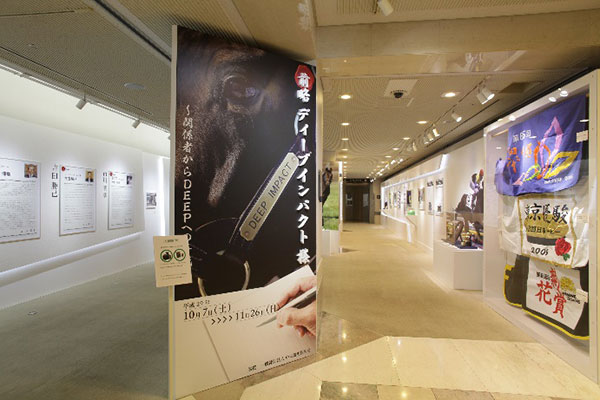
Special Exhibition
“Dear Deep Impact” 2017 in Autumn -
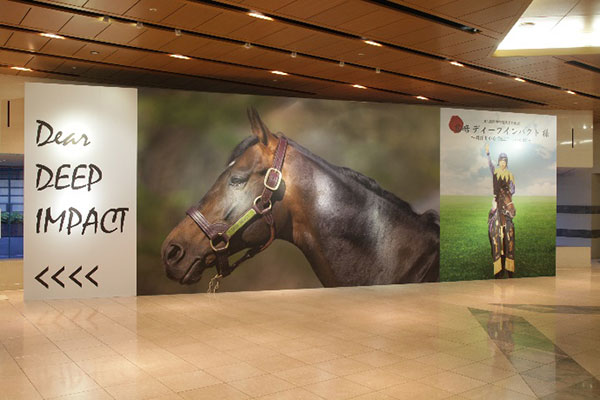
Gallery exhibition
“Dear Deep Impact” 2017 in Autum
Memorial Hall
The Memorial Hall introduces the Hall of Fame horses and horsemen which have made exceptional contributions to the development of Horseracing in Japan. The Memorial Hall displays portraits, bronze statues and related information of these horses and horsemen.
-
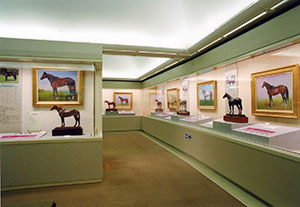
-
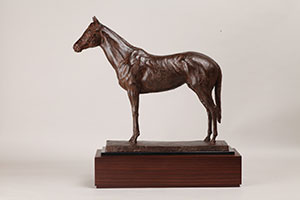
Bronze Statue of “Vodka “
( Awarded in 2011 as the 29th Hall
of Fame horse )
Exhibition Room 1
●The Development of Racing -300 years of Thoroughbred Romance-
Visitors can learn in a comprehensible way about the racing history in the United Kingdom , France, the United States, Japan and other countries through Photographs and captions.
Also exhibited are miniature georama reproducing the "The Crowd at Epsom Racecourse on the Derby day in 1856" and the "Horse Racing in Japan in the end of Edo Era ".
-
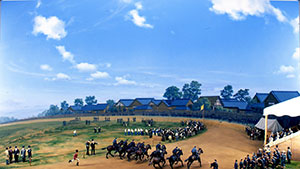
Horse Racing in Japan
(The End of Edo Era / Georama) -
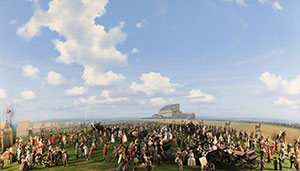
The Crowd at Epsom Racecourse
(The Derby Day, 1856 / Georama)
Exhibition Room 2
Visitors can learn “what the horse racing is” and how the race horse are made, and can play a roll of JRA starter. You will see the state-of-the-art technology while we were straggling with developing our racing system. This corner introduces the mechanism of the present racing from every aspect.
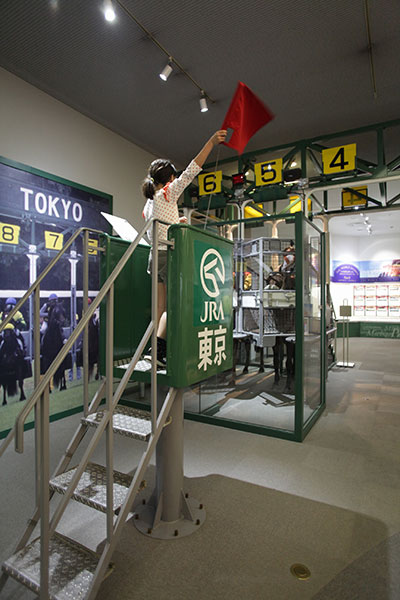
〈The Starting Gate〉
Starting Gate
The actual starting gate is exhibited, which produced based on JSS30 type gate. Here astride a life-size model of a racehorse, you will become a jockey and experience the thrill of opening the gates for the race. In addition, you can become a member of the starter, and set the race in motion.
Exhibition Room 3
We introduced beautiful walnut cases and that made us possible to have special exhibition just in this room only.
The Museum Hall (Uma no Manabiya)
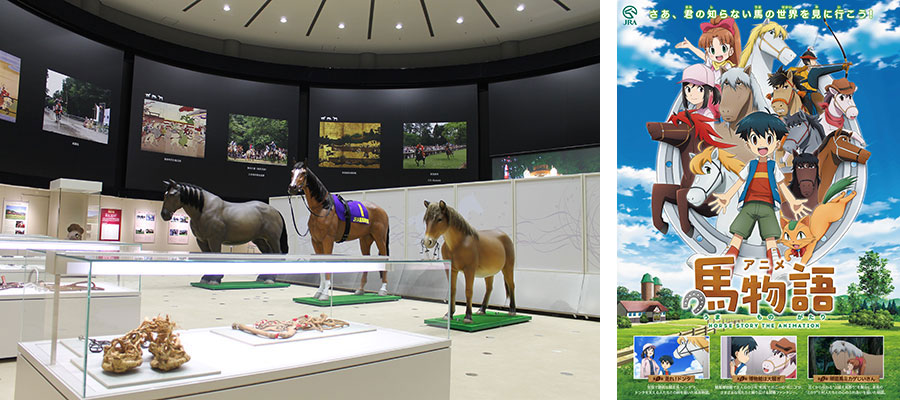
There is the 150-inch projection monitor to show the various movies about horses and equine culture, with the graphical explanation panels and display of the concerned materials. Also you can enjoy our animation the “horse story” there.
The exhibits in this hall introduce the horseracing culture and equine culture.
Three full-scale horse models (thoroughbred, draft horse and Japanese native pony) are displayed for understanding the differences as each species. The events are often held in the hall as multipurpose space.
Live Theater “Thoroughbred”
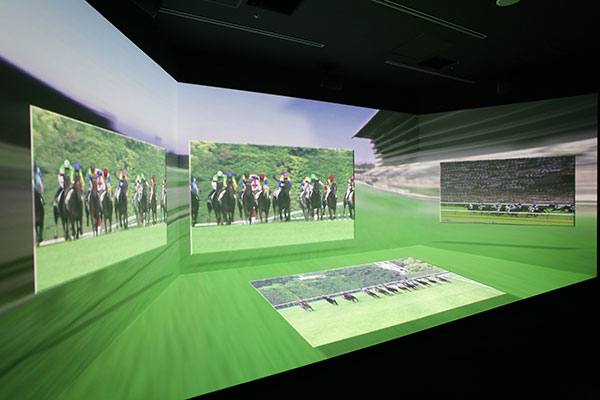
Visitors can enjoy three videos as follows;
1.”Thoroughbred Laboratory” is made for kids to learn what the thoroughbred is and find the great ability of the horse.
2.”The way to be race horse” is to show you what is needed to be a race horse leading to the glory.
3.”The Japanese Derby in 2016” is focusing at the Japanese Derby in 2016. Be a witness of the dramatic race history with 196,100 attendees.
“Narikiri Jockey (you might be a Jockey)”
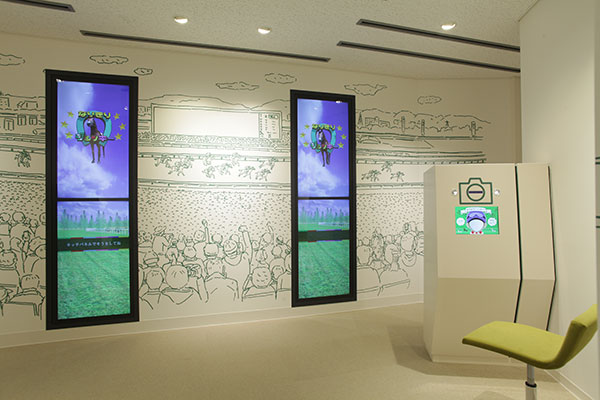
This virtual racing simulator if mainly for kids. Please have a seat and take a picture with your face and select your favorite owner’s silk and you are off! Whether you can win or not is totally depending on your luck! Please do not forget to take a picture after the race.
General Information
- Opening Hours
- On race days : 10:00 am to 5:00 pm
Off-course betting days : 10:00 am to 5:00 pm
On other days : 10:00 am to 4:00 pm - Days Closed
- March to November:
Mondays and Tuesdays
(If a national holiday, the museum will be closed the following day instead) - December to February:
Mondays, Tuesdays and Fridays (Excluding holidays)
The year-end and New Year's holidays - Admission Fee
- Free (Racecourse admission fee is required on live race days)
- Access
- From Keio LineHigashi-fuchu Station, 10-minutes walk.
Fuchu Keiba Seimon Mae Station, 7-minutes walk.
Fuchu Station, 18-minutes walk.
From JR Musashino Line / Nambu Line Fuchu-Honmachi Station, 18-minutes walk.
From Seibu Tamagawa Line Koremasa Station, 20-minutes walk. - Inquiries
- JRA Racing Museum
JRA Tokyo Racecourse 1-1 Hiyoshi-cho, Fuchu-shi,
Tokyo 183-8550 Japan
TEL : 042-314-5800 - Web Site
- https://www.bajibunka.jrao.ne.jp
